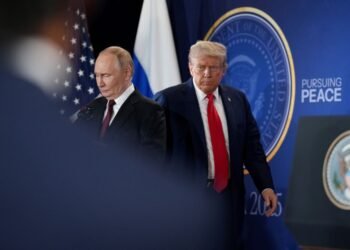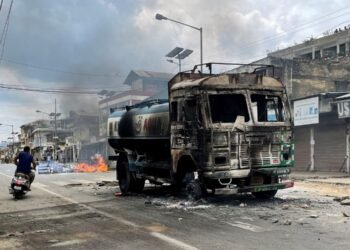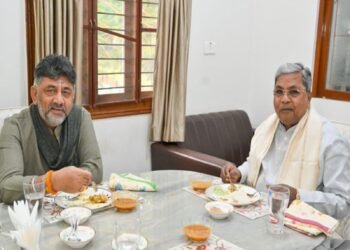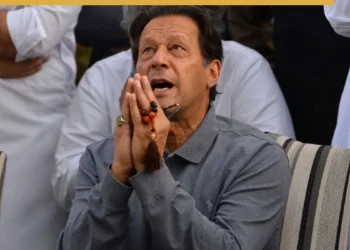The recent communal clashes in Sambhal and attempts to alter the religious identity of sacred places, including the famous Ajmer Sharif Dargah, highlight the growing challenges to the Places of Worship Act, 1991. As legal disputes mount, the risk of deepening religious divides grows, urging the judiciary to protect India’s communal harmony and uphold the integrity of its religious landmarks.
By Navin Upadhyay
New Delhi
The Places of Worship (Special Provisions) Act, 1991, passed by the Indian government, was designed to preserve the religious identity of places of worship as they stood on August 15, 1947—the day India gained independence. The Act’s primary objective was to maintain the status quo of religious sites, ensuring that their character was not changed from one religion to another. This law serves as a safeguard for communal harmony, preventing the transformation of religious sites for political or social purposes.
However, recent developments have raised significant concerns about the violation of this law, exposing growing challenges to its implementation and the increasing number of disputes surrounding religious sites.
Rising Concerns Over Legal Challenges
The All India Muslim Personal Law Board (AIMPLB) has expressed alarm over a rising number of court cases questioning the status of mosques and dargahs in India. In particular, the board has urged Chief Justice of India, Sanjiv Khanna, to take suo motu action in response to these claims, which are seen as undermining the Places of Worship Act, 1991. The law explicitly prohibits any change to the religious nature of places of worship as they existed on Independence Day, 1947.
In a statement, AIMPLB spokesperson SQR Ilyas condemned these growing legal claims, calling them a “blatant mockery” of both the law and the Constitution. He called for stricter judicial scrutiny to prevent further erosion of the Act’s intent. Ilyas warned that failure to enforce the law could have serious repercussions for India’s communal harmony.
The Case of Sambhal and the Ajmer Dargah
One of the most troubling recent developments is the ongoing controversy surrounding the Jama Masjid in Sambhal. This case is only the latest in a series of similar disputes involving religious sites across India. Following the unresolved issue of the Sambhal mosque, another contentious claim has emerged—this time regarding the renowned Ajmer Sharif Dargah, which some have sought to declare as the Sankat Mochan Mahadev Temple.
Alarmingly, the West Civil Court in Ajmer has agreed to hear this petition, issuing notices to the parties involved. The claim threatens to alter the religious identity of one of the country’s most revered Sufi shrines, a matter that deeply concerns the AIMPLB. Ilyas pointed out that such cases undermine the sanctity of the Places of Worship Act, which was put in place to prevent religious sites from being turned into sites of conflict or political manipulation.
This petition is not an isolated instance. Similar legal disputes have emerged in recent years, involving places like the Gyanvapi mosque in Varanasi, the Shahi Eidgah in Mathura, the Bhojshala mosque in Madhya Pradesh, and the Teele Wali Masjid in Lucknow. These cases, many of which are currently being litigated, directly contravene the Supreme Court’s earlier ruling in the Babri Masjid case, which upheld the importance of maintaining the status quo as established by the 1991 Act.
One of the most concerning instances is the recent violence and controversy surrounding Sambhal violence and attempts to declare the Ajmer Sharif Dargah a Hindu temple. These incidents not only undermine the spirit of the Places of Worship Act but also fuel religious tensions and disrupt the peace that the law seeks to preserve.
The Places of Worship Act: A Brief Overview
The Places of Worship Act, 1991, was designed to ensure that the religious status of any place of worship that existed on August 15, 1947, would remain unchanged. The Act specifically prohibits the conversion of any place of worship, be it a mosque, temple, church, or any other religious site, from one religion to another. The only exception to this is the Babri Masjid case in Ayodhya, where the Supreme Court ruled separately, granting the disputed site for the construction of a Hindu temple.
This Act was created to prevent any disputes that could arise over the religious identity of historical places of worship, many of which are at the center of contentious debates due to the social and political sensitivities surrounding them.
The Ajmer Sharif Dargah Controversy
The Ajmer Sharif Dargah, a revered Sufi shrine dedicated to the 13th-century Sufi saint Khwaja Moinuddin Chishti, has been at the heart of a growing controversy in recent months. The Dargah, located in Ajmer, Rajasthan, has been a symbol of communal harmony, attracting people of all faiths. However, some elements have attempted to push an agenda to declare the Dargah as a Hindu temple, challenging its status as a Muslim place of worship.
The movement to reclassify the Ajmer Sharif Dargah as a Hindu temple directly violates the Places of Worship Act. The Dargah has existed in its current form long before 1947, and any attempt to change its religious character is illegal under the provisions of the Act. Proponents of this agenda argue that there was a Hindu temple at the site before the Dargah was established, but such claims are historically and legally contested.
Despite the legal protection provided by the Places of Worship Act, this movement has gained significant traction in recent years, fueling communal tensions and straining the centuries-old spirit of religious coexistence. This incident is emblematic of a broader trend in India where historical religious sites are being disputed and reinterpreted for political purposes.
Communal Clash in Sambhal, Uttar Pradesh:
A series of violent clashes erupted in Sambhal, Uttar Pradesh, on November 24, 2024, resulting in the tragic loss of four lives and injuries to several others, including police personnel. The violence was triggered by a court-ordered survey of the Shahi Jama Masjid, a historic mosque in the region.
The Root Cause: Mosque Survey
The primary catalyst for the clashes was the planned survey of the Shahi Jama Masjid, a centuries-old mosque. The local Muslim community expressed deep concerns about the survey, fearing that it might lead to attempts to claim the mosque for Hindu religious purposes. Tensions escalated as the survey team arrived, leading to violent confrontations between the protesters and security forces.
The Aftermath
In the aftermath of the violence, the Uttar Pradesh government imposed strict measures, including internet shutdowns and heavy police deployment, to quell the situation. Several arrests have been made, and charges have been filed against various individuals, including a local Samajwadi Party MP, who is accused of inciting the mob.
A Pattern of Communal Tensions
The Sambhal clashes are part of a broader pattern of communal tensions that have plagued India in recent years. Religious polarization, fueled by misinformation and hate speech, has often led to violent confrontations and social unrest. The incident in Sambhal underscores the urgent need for dialogue, tolerance, and respect for diverse religious beliefs.













